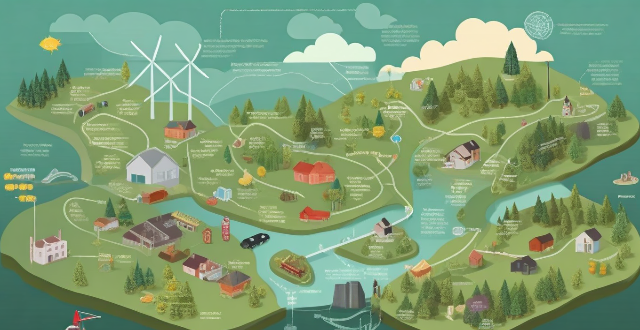Wind energy is a renewable and sustainable source of power that can significantly contribute to a more sustainable future. It offers several benefits including reducing carbon emissions, stimulating economic growth, enhancing energy security, driving technological innovation, compatible land use, community engagement, scalability, improving health impacts, and promoting education and awareness. By incorporating wind energy into our energy mix, we can create a cleaner, healthier, and more sustainable environment for future generations.

Wind Energy and a Sustainable Future
Wind energy, a renewable source of power, plays a vital role in contributing to a sustainable future. It offers an alternative to fossil fuels, which are finite and contribute significantly to greenhouse gas emissions. Below are some key ways wind energy supports sustainability:
Reduction of Carbon Emissions
- Decreasing Dependence on Fossil Fuels: Wind turbines generate electricity without burning fuels, reducing carbon dioxide emissions.
- Mitigating Climate Change: By lowering the amount of greenhouse gases released into the atmosphere, wind energy helps combat climate change.
Economic Benefits
- Job Creation: The wind industry creates jobs in manufacturing, installation, and maintenance.
- Stimulating Local Economies: Wind projects often lead to increased economic activity in local communities.
Energy Security
- Diversifying Energy Mix: Including wind in the energy mix reduces dependence on imported fuels.
- Increasing Energy Independence: Countries with more renewable energy sources like wind have greater control over their energy supply.
Technological Innovation
- Technological Advances: The wind industry continuously improves turbine efficiency and performance.
- Driving Research and Development: Investment in wind technology spurs innovation across various scientific fields.
Land Use and Conservation
- Compatibility with Agriculture: Wind turbines can coexist with farming practices, allowing for dual use of land.
- Reducing Land Degradation: Wind farms generally have a low impact on soil quality and natural habitats compared to other energy infrastructure.
Community Engagement
- Public Acceptance: Engaging communities in wind project development can increase support for renewable energy initiatives.
- Energy Democracy: Distributed wind generation allows residents to produce their own power, enhancing individual control over energy consumption.
Scalability and Flexibility
- Suitable for Various Locations: Wind turbines can be installed in diverse environments, from remote rural areas to offshore sites.
- Modular Expansion: Wind farms can be expanded gradually as demand increases or technology advances.
Health Impacts
- Improving Air Quality: Fewer pollutants mean better air quality, leading to potential health benefits for people living near wind farms.
Education and Awareness
- Promoting Environmental Stewardship: Wind energy projects often include educational programs that raise awareness about sustainability and clean energy.
By harnessing the power of wind, we can move towards a more sustainable energy system that benefits both the environment and society. It is clear that wind energy is not just a part of the solution but a cornerstone for achieving a sustainable future.